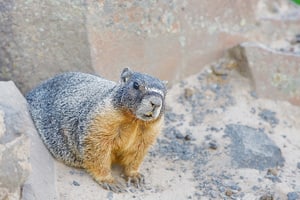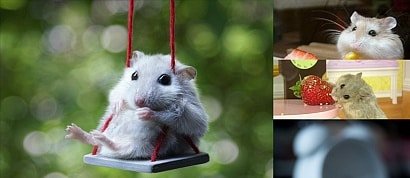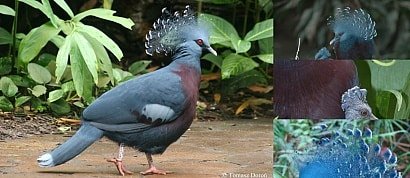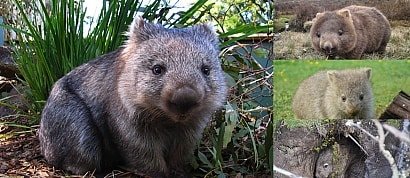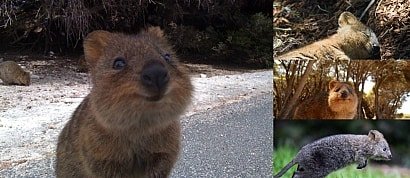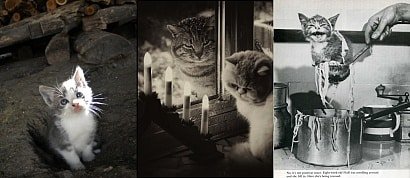My favorite images of yellow-bellied marmots - also known as rock chucks.
Thank you to Listal member Toonhead for the suggestion.
en.wikipedia.org/wiki/Yellow-bellied_Marmot
The yellow-bellied marmot (Marmota flaviventris), also known as the rock chuck, is a ground squirrel in the marmot genus.
Yellow-bellied marmots usually weigh from 1.6 to 5.2 kilograms (3.5 to 11.5 lb) when fully grown, though males typically weigh more than females. Adult males typically weigh between 3 to 5 kilograms (6.6 to 11.0 lb); females typically weigh between 1.6 to 4 kilograms (3.5 to 8.8 lb).
They have a brown coat, a white patch of fur between the eyes, a reddish-brown tail, and a yellow belly, from which they get their name. Their ears are small and round, and they have a short white muzzle with a black nose. They get fatter in the autumn just before hibernating.
The yellow-bellied marmot lives in the western United States and southwestern Canada, including the Rocky Mountains and the Sierra Nevada. It inhabits steppes, meadows, talus fields and other open habitats, sometimes on the edge of deciduous or coniferous forests, and typically above 6,500 feet (2,000 m) of elevation.
Their territory is about 4 to 7 acres (2 to 3 ha) around a number of summer burrows. Marmots choose to dig burrows under rocks because predators are less likely to see their burrow. Predators include wolves, foxes, coyotes, dogs and eagles. When a marmot sees a predator, it whistles to warn all other marmots in the area (giving it the nickname "whistle pig"). Then it typically hides in a nearby rock pile.
Marmots reproduce when about two years old, and may live up to an age of fifteen years. They reside in colonies of about ten to twenty individuals. Each male marmot digs a burrow soon after he wakes up from hibernation. He then starts looking for females, and by summer may have up to four female mates living with him. Litters usually average three to five offspring per female. Only about half of those pups survive and become yearlings.
Marmots have a "harem-polygynous" mating system in which the male defends two or three mates at the same time. Female offspring tend to stay in the area around their home. Male offspring typically leave when they are yearlings and will defend one or more females.
Yellow-bellied marmots spend about 80% of their life in their burrow, 60% of which is spent hibernating. They often spend mid-day and night in a burrow as well. These burrows are usually constructed on a slope, such as a hill, mountain, or cliff. The hibernation burrows are can be up to 5 to 7 metres (16 to 23 ft) deep, but the burrows constructed for daily use are usually only 1 metre (3.3 ft) deep.
Their hibernation period varies on elevation, but it is typically from September to May. Occasionally, they will climb trees and other flora, but they are usually terrestrial.
Yellow-bellied marmots are diurnal. The marmot is also an omnivore, eating grass, grains, leaves, flowers, legumes, fruit, grasshoppers and bird eggs.
Added to
People who voted for this also voted for
Butterflies
Player's Cigarette Cards
Martin De Pasquale
Classical Child Actors
Harp - Movies
Marilyn Monroe Is Refreshing Her Feet!
Polish cities
Beautiful Thailand
Movies featuring the Irish Republican Army
Eric Rohmer - movies
Babes & Bikes; part 5
My favorite movies based on books part 3
Films About Horse
Remember? part III
Animal Candids 15; Family, part 2
More lists from kathy
Favorite Images of Red Pandas
Favorite Images of Rodents
Favorite Images of Pigeons & Doves
Favorite Images of Wombats
Favorite Images of Quokkas #1
Favorite Images of Cats & Kittens #6
Favorite Lists #7
 Login
Login